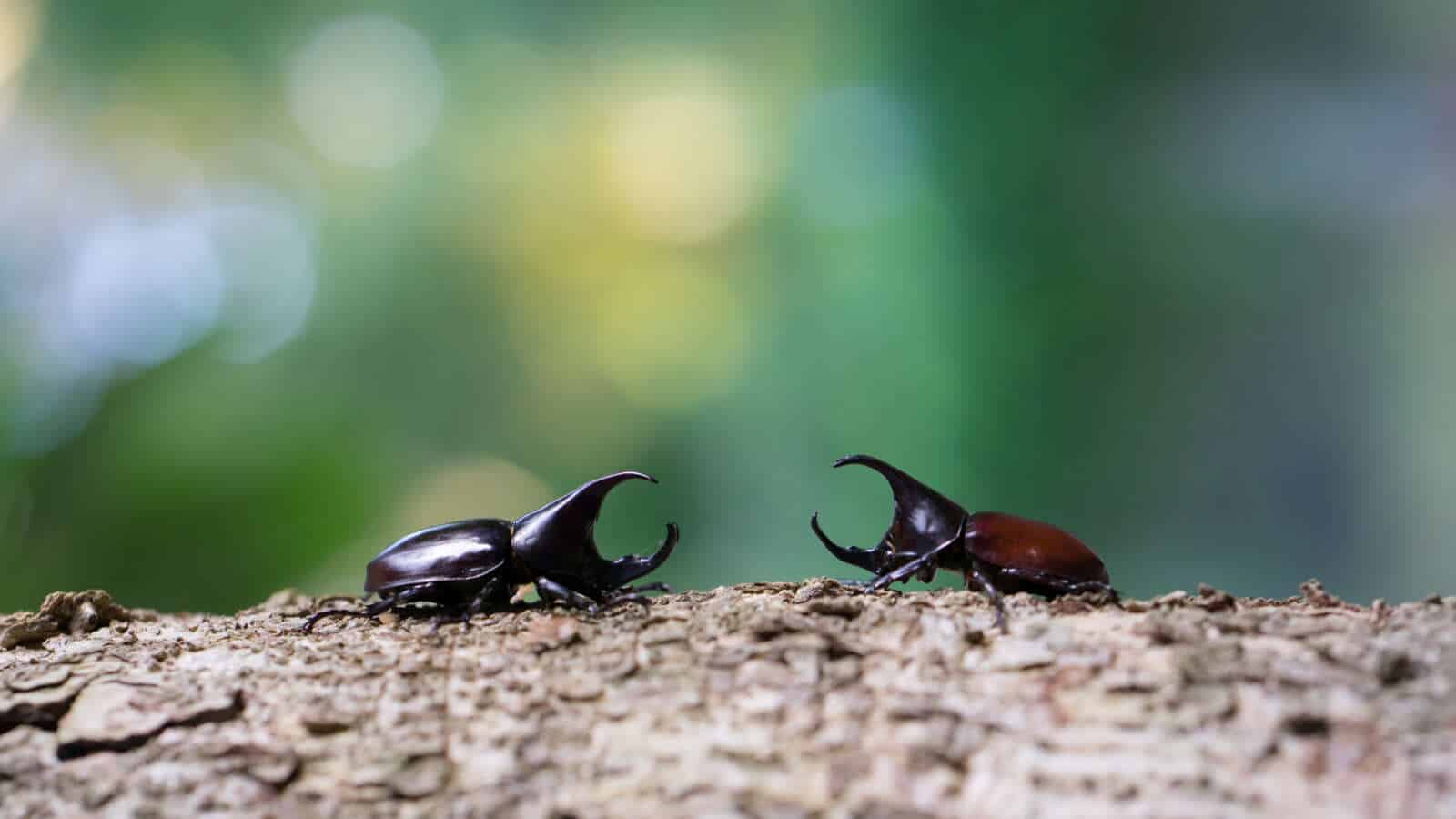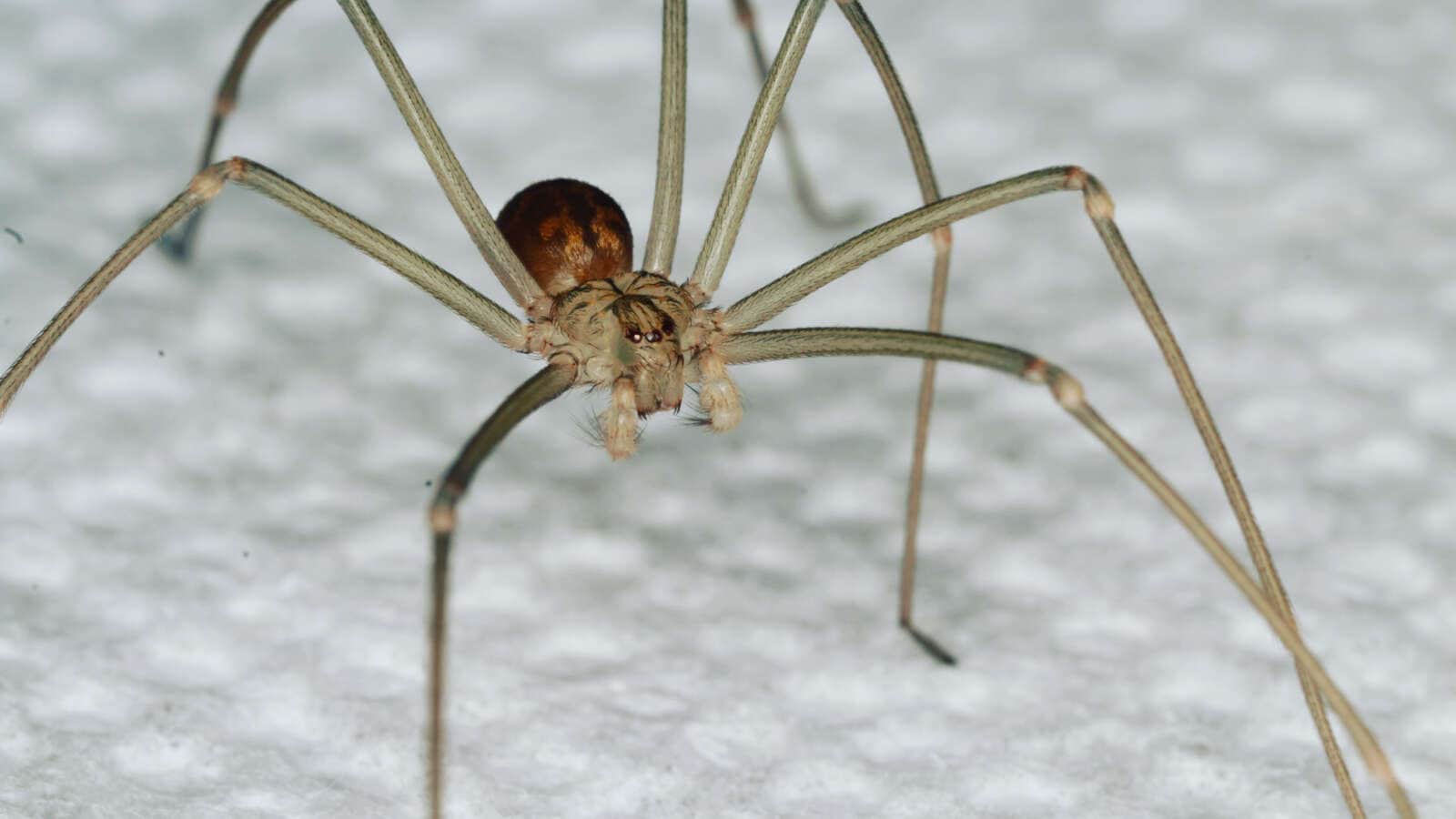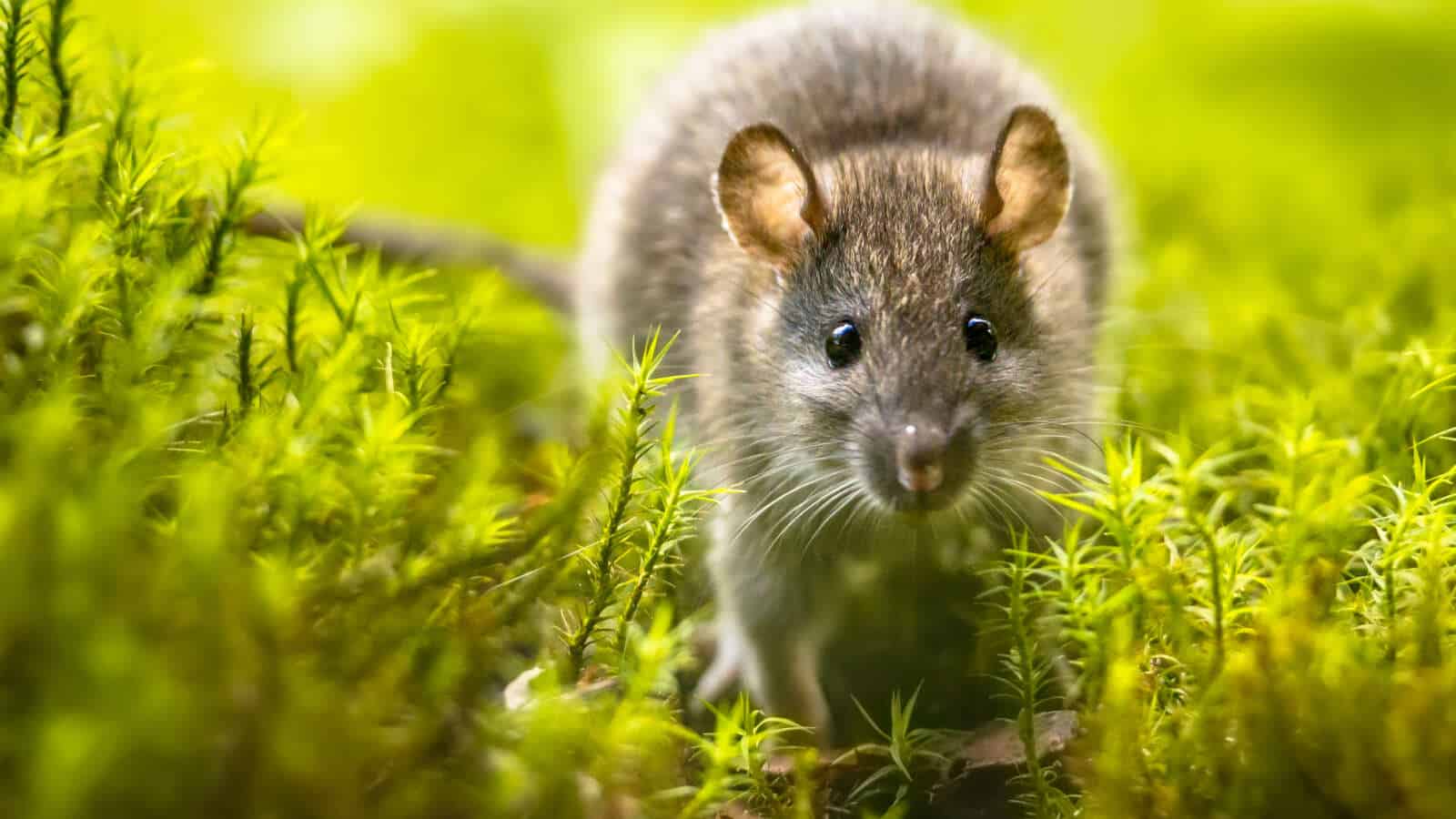Common Pantry Pests In Holiday Baking
One of the most popular activities during the holiday season is baking desserts, and for good reason. Between the cold weather, increase in social gatherings, and popular seasonal flavors, there is much to love about holiday baking. If you like to bake treats for your loved ones, you likely stock up on all of the basic ingredients before diving into the messy yet enjoyable world of baking. No matter what kind of desserts you like to make, there are certain pantry staples that are necessary to keep in the kitchen at all times.
Flour, sugar, baking powder, baking soda, cocoa powder, and powdered sugar are some of the most important ingredients to keep on hand when it comes to making desserts. Unfortunately, these essential ingredients are not immune to one of the most frustrating experiences a person can have in the kitchen (besides burning garlic while making a sauce). Pantry pests are an entire category of tiny insects that frequently invade dried goods, especially if those ingredients are open or in flimsy packaging. Let’s dive into the hungry world of pantry pests and learn where they come from, what they are, and how to prevent them from invading your pantry.
What Is A Pantry Pest?
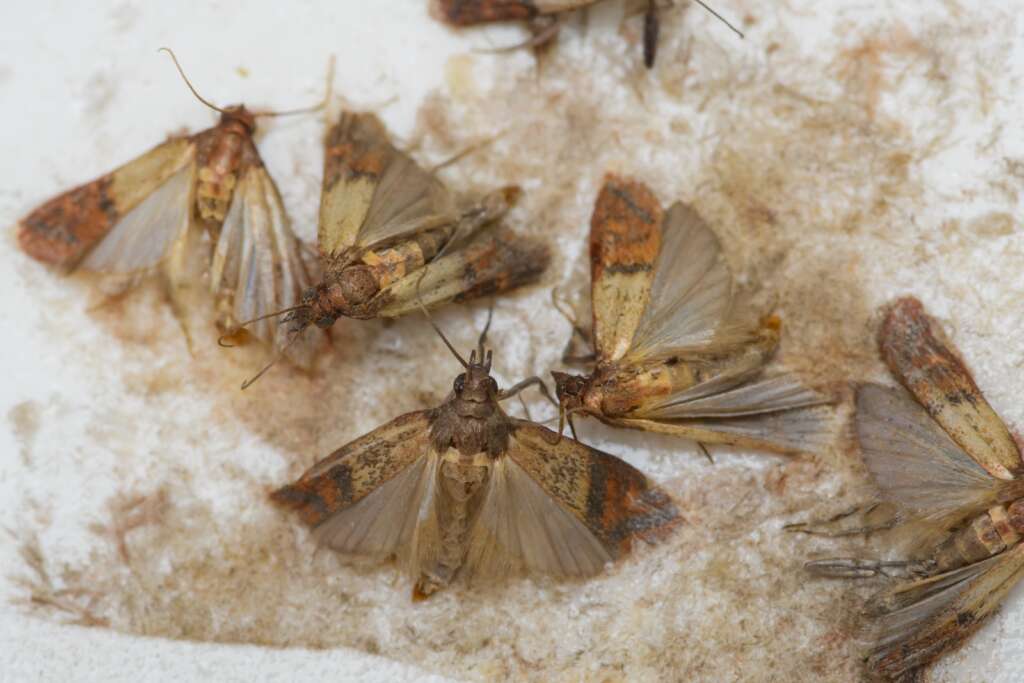
First of all, it’s important to know what separates a pantry pest from a regular pest. After all, there are plenty of pest species that invade kitchens and food storage. Pantry pests are essentially the small insects that can invade most types of food packaging and live their entire lives within that package. They are not technically dangerous to humans or pets since these pests don’t spread diseases, bite us, or damage our infrastructure. However, they do invade our non-refrigerated food items and lay eggs within the package, so they’re still not the cleanest of creatures. Some people group other food-loving pests into the term “pantry pests,” so you may see ants and roaches lumped in with these insects. But pantry pests are still different from those classic pests since ants and roaches can’t survive by solely living within a package of food.
There are quite a few species lumped into this group, with some of the most common being Indian meal moths, sawtoothed grain beetles, red beetles, rice weevils, bean weevils, drugstore beetles, flour beetles, and meal moths. These pests will invade any pantry, regardless of the kitchen’s overall cleanliness. All of them can live their entire lives in food items and share the same basic life cycles. Out of their four life stages, the larva and adult stages are the most destructive to pantry items. Pantry pests are small enough that they can slip through the tiniest of gaps in a box or plastic bag, so damaged packaging is more likely to be invaded by these insects. There can be multiple generations of a certain pest living in one box or bag if the food item isn’t thrown out, as the female pests lay their eggs directly onto the food to give their offspring an instant food source. This is why it’s essential to stay vigilant against these tiny invaders; a cluster of insect eggs in the baking ingredients is not the type of secret ingredient we enjoy!
Where & How They Invade
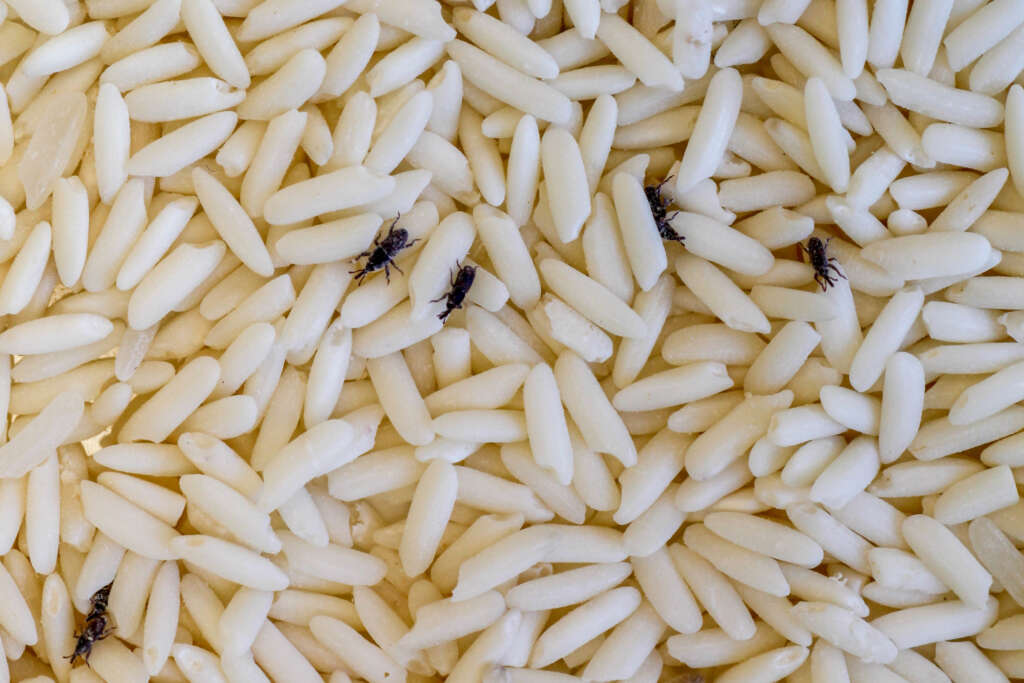
With most pests, it’s fairly clear how they get inside our homes. Whether it’s an army of ants that found a hole in the house’s exterior wall or a spider that sneakily entered through the gap in the front door’s sweep, there is usually some part of the house that needs to be properly sealed against the outdoors. Pantry pests are a bit trickier since they are so small and can’t survive in other areas of the home. They can certainly invade through entry points, like gaps in window screens and cracks in the wall, but this is not the most common way that pantry pests get into our food. Instead, these pests typically get into food anytime during the production and storage processes.
When the food is kept in the original factory, trucks, and grocery store, pantry pests can chew through the packaging. They can eat through thin plastic, cellophane, paper, and cardboard. Pantry pests favor opened items and items that sit idle for a long time, but they can get into new food items as well. If the food items that they invaded are not disposed of, the pantry pests can spread to other food items that sit near their original home. The longer that the compromised food sits out, the more likely that the infestation will spread.
Pantry pests will invade all kinds of food items that are usually found in the pantry or cabinets, but their favorite foods are:
- Flour
- Sugars
- Cake mix
- Nuts
- Dried fruit
- Chocolate
- Grains
- Cereals
- Baking soda
- Baking powder
- Pasta
- Seeds
In short, any of the typical pantry staples we like to keep in our kitchens are at risk of being invaded by pantry pests if they aren’t stored in airtight containers, but more on that later. For now, it’s a good idea to be familiar with some of the most common pantry pests that could ruin your holiday baking experience if they take your ingredients for themselves.
The Typical Species
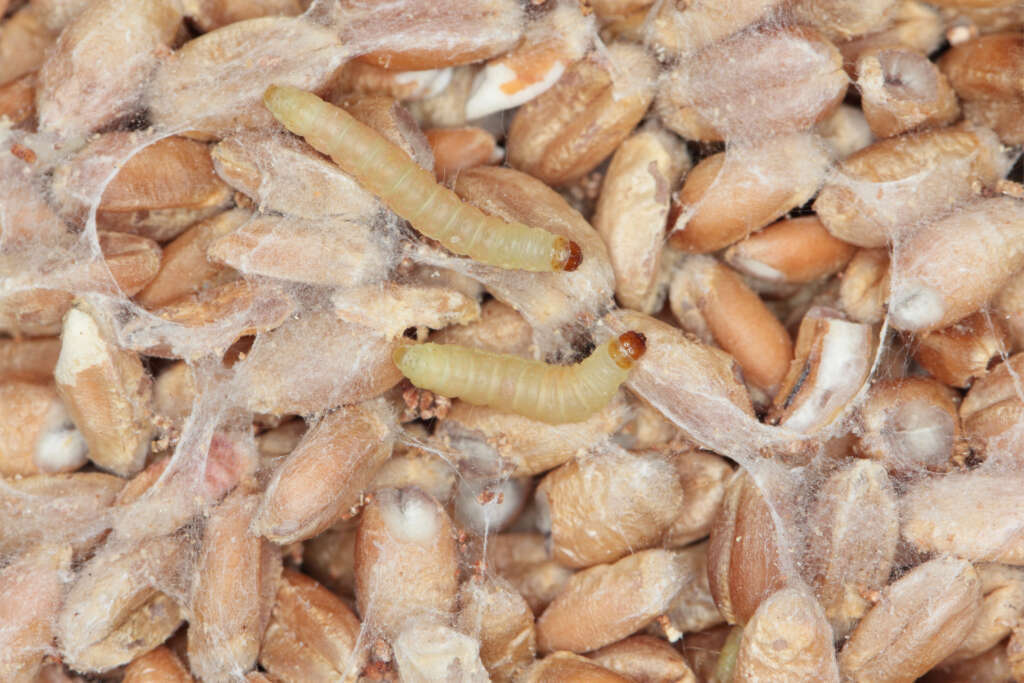
The actual pantry pests that invade our kitchens vary depending on the city, stocked food items, and origins of those food items. That being said, there are three pests that make frequent appearances in dried goods across the country, and knowing the basic differences between them is invaluable in protecting your food against pantry pests this holiday season.
Indian Meal Moths
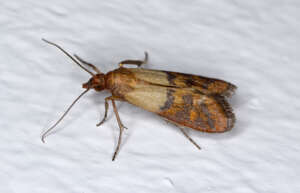
These small moths are light gray with copper-tinged wings. They will fly in zigzag patterns if their home food item is opened, flying away to a wall or other flat surface nearby. Indian meal moths are 3/8 of an inch long and leave their silk webbing inside boxes and bags of food to trap their excrement (gross!). The larvae are about 1/2 of an inch long and lighter in color. These pests are so common because they will invade a wide range of dried goods, but their favorites seem to be pasta, flour, and grains. Adult Indian meal moths can survive for a couple of weeks without food, but they will desperately search for a new food source during that time.
Sawtoothed Grain Beetles
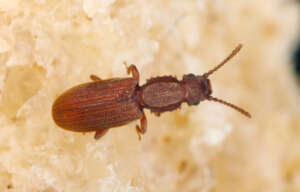 Sawtoothed grain beetles have quite the distinct appearance, so it’s easy to tell if this is the pest invading your pantry. The adults have teeth on the sides of their thorax that gives them their trademark saw-like shape. They are thin and brownish-red in color, and are about 1/10 of an inch long. They don’t fly or like the light, so sawtoothed grain beetles prefer to stay hidden within their designated food. The females lay eggs in cracked or broken grains and nuts. Their larvae are about 1/8 of an inch long and nearly white in color. Sawtoothed grain beetles typically invade cereal, nuts, dried fruits, pasta, and seeds.
Sawtoothed grain beetles have quite the distinct appearance, so it’s easy to tell if this is the pest invading your pantry. The adults have teeth on the sides of their thorax that gives them their trademark saw-like shape. They are thin and brownish-red in color, and are about 1/10 of an inch long. They don’t fly or like the light, so sawtoothed grain beetles prefer to stay hidden within their designated food. The females lay eggs in cracked or broken grains and nuts. Their larvae are about 1/8 of an inch long and nearly white in color. Sawtoothed grain beetles typically invade cereal, nuts, dried fruits, pasta, and seeds.
Flour Beetles
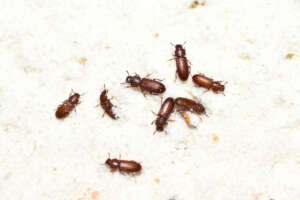
Despite their name, flour beetles do not solely invade flour. These beetles are about 3/16 of an inch long and are reddish-brown. Red flour beetles are one of the most common types, but they all have the same general preferences and habits. Their eggs stick to the food that they lay them within, so their eventual larvae are more secure than those of other species. The larvae are about 1/4 of an inch long with white coloring and 2 spines on their tails. Flour beetles cause the food they invade to grow moldy, and if they get into the flour, it will start to smell and change colors. These pest invade nuts, dried fruits, cereals, flour, chocolate, and pet food.
In addition to understanding the basics of common pantry pests, knowing and implementing proper prevention tactics are surefire ways to protect your dried goods from these hungry pests.
Preventing Pantry Pests
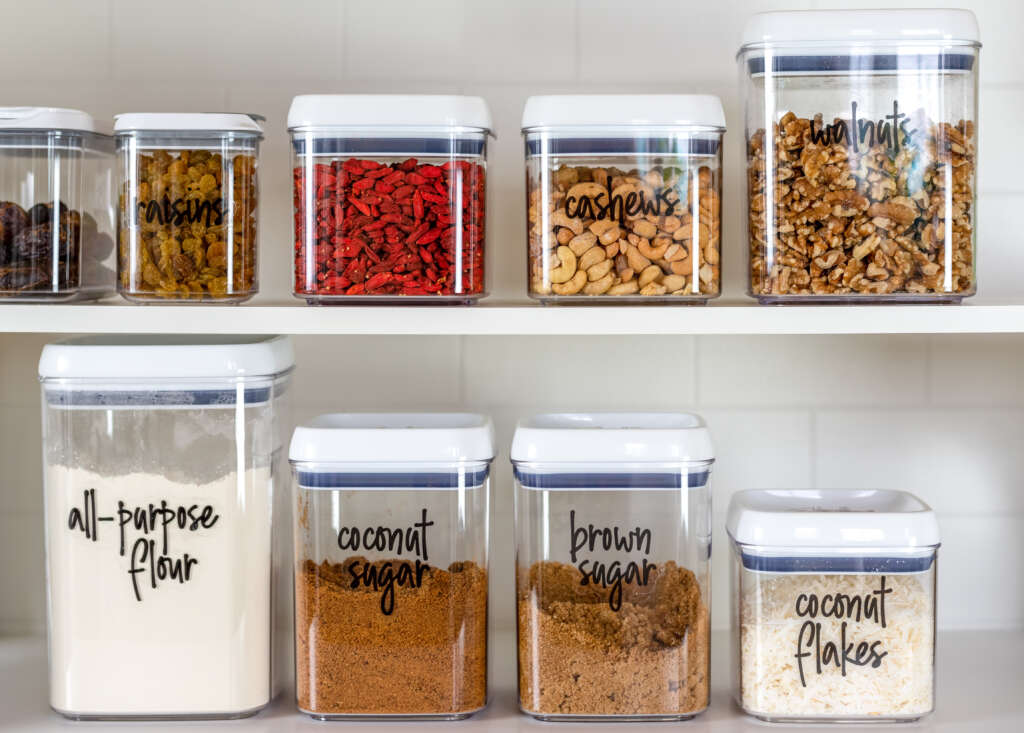
When it comes to pantry pests, the key to preventing an infestation is to make it virtually impossible for them to get inside any food in your pantry and cabinets. The most important step is to transfer any pantry staples into airtight containers. You can choose the specific containers based on your own preferences, but make sure that they have a good lid and an airtight seal. Glass and hard plastic are the best materials at keeping pests out.
Another way to prevent pantry pests from ruining your food stock is to ensure that your groceries are all pest-free before you even leave the grocery store. When shopping for non-refrigerated foods, check each package for any signs of damage or pests. Do not buy anything that is unsealed, has holes, is ripped, has webs, or contains any actual pests. The boxes and bags should be completely intact and free of any pest activity.
Finally, maintaining good sanitation practices in both the pantry and the general kitchen is a reliable way to keep pantry pests (and other pests) out. Check the expiration dates on your packaged food items regularly, and throw out anything that is definitely past its date. Keep your food storage as uncluttered as possible by keeping everything in loose rows and stacks. Inspect your pantry and cabinets for any leaking items, then toss any compromised food and clean the spillage with an antibacterial wipe or spray. Speaking of antibacterial cleaner, we recommend wiping down kitchen counters and pantry shelves with your sanitizer of choice on a regular basis. A good habit to get into — if you don’t do it already — is to wipe down the surfaces after you are finished cooking and baking for the day. Once the Christmas cookies are put away and the dishes are washed, sanitizing your kitchen is a great way to end the day’s baking experience.
Pointe’s Services Are The Best Holiday Treat
Between homemade cookies and festive candies, there are all kinds of sweet treats to enjoy during the holiday season. Unfortunately, pests don’t take a vacation from bothering us during the holidays, so pest control services are an essential in every season. At Pointe Pest Control, we are dedicated to protecting local homes and businesses from any creepy-crawlies trying to ruin your day. Our experienced technicians begin every service with a full inspection of the property to analyze all areas of pest activity, determine the species involved, and find any entry points and nests. The findings from the inspection will then inform the customized treatment plan we create for each client, as we believe pest control should never be a “one-size-fits-all” experience. Since all of our treatments are completely safe for both people and pets, you never have to worry about toxic chemicals contaminating your space. We look forward to keeping you pest-free. Contact us today to learn more about our thorough pest control services and to see the Pointe Difference in your holiday pest control!
Citations
Cahn, L. (2023, May 19). Here’s how to get rid of the most common pantry pests. Taste of Home. Available at https://www.tasteofhome.com/collection/how-to-get-rid-of-bugs-in-your-pantry/ (Accessed on December 11, 2023).
Hahn, J., Jesse, L., & Pellitteri, P. (2019). Pantry pests: Insects found in stored food. University of Minnesota Extension. Available at https://extension.umn.edu/product-and-houseplant-pests/pantry-pests-insects-found-stored-food (Accessed on December 11, 2023).
Latyshev, O. (2022, December 1). Keep pantry pests out of baking. Ehrlich. Available at https://www.jcehrlich.com/help-and-advice/blog/occasional-invaders/pantry-pests-holiday-baking
(Accessed on December 11, 2023).
Nelson, A. (2023, September 29). Common pantry pests and how to deal with them. Web MD. Available at https://www.webmd.com/food-recipes/ss/slideshow-common-pantry-pests (Accessed on December 11, 2023).
Preventing pantry pests. (n.d.). Pest World. Retrieved December 11, 2023, from https://www.pestworld.org/news-hub/pest-articles/preventing-pantry-pests/
Sawtoothed grain beetle facts & information. (n.d.). Orkin. Retrieved December 11, 2023, from https://www.orkin.com/pests/beetles/sawtoothed-grain-beetles




